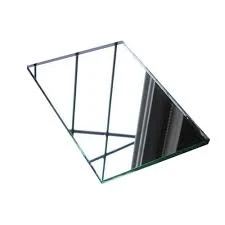

The Float Glass Production Line A Comprehensive Overview
The float glass production line represents a significant advancement in the manufacturing of flat glass, revolutionizing the industry since its invention in the 1950s. This innovative process not only enhances the quality of glass but also streamlines production, making it more efficient and cost-effective.
At the heart of the float glass process is the principle of density. The method begins by melting raw materials, mainly silica sand, soda ash, and limestone, in a furnace at temperatures that exceed 1,600 degrees Celsius. Once the mixture turns into molten glass, it is carefully poured onto a layer of molten tin. The unique properties of tin allow the glass to float on its surface, creating a perfectly flat and smooth sheet. This is crucial for the glass’s final quality, as imperfections are minimized, resulting in a uniform thickness and clarity.
The float glass production line can produce large sheets of glass, typically measuring up to 3.2 meters in width and 6 meters in length. After the glass has been formed, it undergoes a rigorous cooling process in a controlled environment, which is essential for maintaining its structural integrity. This annealing process allows the glass to gradually cool, reducing internal stresses and ensuring durability.

Once cooled, the glass is cut into desired dimensions and can be processed further based on its intended application. The versatility of float glass makes it suitable for a wide range of products, including windows, mirrors, and architectural structures. Additionally, the glass can be treated or coated to enhance energy efficiency, safety, and aesthetics, such as reflecting heat or providing UV protection.
The advancements in technology have led to the automation of the float glass production line, significantly increasing output while reducing labor costs. Computerized systems manage everything from raw material feeding to furnace operation, ensuring consistent quality control at every stage. Furthermore, modern float glass facilities utilize advanced energy-efficient furnaces and recycling processes, leading to a reduced environmental impact.
Moreover, with the increasing demand for sustainable construction materials, the float glass industry is continuously innovating. Research and development are focused on improving energy efficiency during manufacturing and increasing the recyclability of glass products. Innovations such as solar control glass and low-emissivity (low-E) coatings are becoming prevalent, further pushing the boundaries of what float glass can achieve in the modern world.
In conclusion, the float glass production line is a marvel of modern engineering that combines quality, efficiency, and sustainability. As the demand for flat glass continues to grow globally, the industry is poised for further advancements, ensuring that float glass remains a vital material in architecture, automotive, and green construction for years to come. With continuous innovations and a commitment to environmental responsibility, the float glass production line is set to meet the evolving needs of the market while maintaining its exemplary standards.